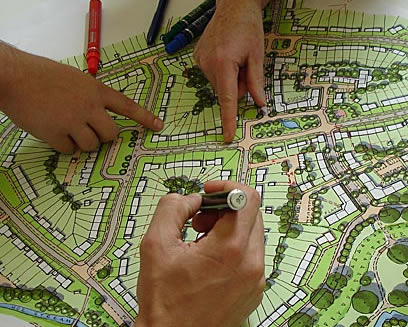Sustainability in Community Planning
Sustainable community planning is an essential approach to ensure the long-term well-being and prosperity of a community. By considering ecological, social, and economic factors, sustainable community planning aims to create vibrant and resilient communities that are capable of meeting the needs of present and future generations.
Environmental Considerations
One key aspect of sustainable community planning is the integration of environmental considerations. This involves promoting energy efficiency, reducing greenhouse gas emissions, and preserving natural resources. By implementing green infrastructure, such as parks and green spaces, communities can enhance biodiversity and provide recreational areas for residents.
Social Equity and Inclusion
Sustainable community planning also emphasizes social equity and inclusion. It seeks to create diverse and inclusive neighborhoods, ensuring that everyone has equal access to essential services, such as healthcare, education, and transportation. By prioritizing affordable housing and accessible infrastructure, communities can foster a sense of belonging and improve the overall quality of life for all residents.
Economic Prosperity
Another crucial aspect of sustainable community planning is economic prosperity. By promoting local businesses, supporting entrepreneurship, and creating job opportunities, communities can build a strong and resilient economy. Sustainable community planning also encourages the development of mixed-use areas, where residential, commercial, and recreational spaces coexist, fostering economic growth and enhancing livability.
The Benefits of Sustainable Community Planning
By adopting sustainable community planning practices, communities can enjoy numerous benefits. Firstly, sustainable communities are more environmentally friendly, reducing carbon emissions and minimizing waste. This helps mitigate climate change and ensures the preservation of natural resources for future generations.
Secondly, sustainable community planning leads to improved public health outcomes. By promoting active transportation options, such as walking and cycling, and creating green spaces, communities can encourage physical activity and reduce pollution levels, thereby enhancing the well-being of residents.
Lastly, sustainable community planning promotes social cohesion and resilience. By prioritizing social equity and inclusion, communities can create a strong social fabric where everyone feels valued and connected. This fosters a sense of community pride and enhances the overall resilience of the community in the face of challenges.
Conclusion
Sustainable community planning is a holistic approach that considers environmental, social, and economic factors to create vibrant and resilient communities. By integrating sustainability principles into community planning, we can build a better future for ourselves and generations to come.
